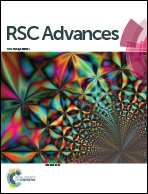A Cu2+-doped two-dimensional material-based heterojunction photoelectrode: application for highly sensitive photoelectrochemical detection of hydrogen sulfide
Abstract
In this work, on the basis of a Cu2+-doped two-dimensional material-based heterojunction photoelectrode, a novel anodic photoelectrochemical (PEC) sensing platform was constructed for highly sensitive detection of endogenous H2S. Briefly, with g-C3N4 and TiO2 as representative materials, the sensor was fabricated by modifying g-C3N4/TiO2 nanorod arrays (NAs) onto the surface of fluorine-doped tin oxide (FTO) and then doping Cu2+ as a CuxS (x = 1, 2) precursor. After the binding of S2− with surface-attached Cu2+, the signal was quenched owing to the in situ generation of CuxS which offers trapping sites to hinder generation of photocurrent signals. Since the photocurrent inhibition was intimately associated with the concentration of S2−, a highly sensitive PEC biosensor was fabricated for H2S detection. More importantly, the proposed sensing platform showed the enormous potential of g-C3N4/TiO2 NAs for further development of PEC bioanalysis, which may serve as a common basis for other semiconductor applications and stimulates the exploration of numerous high-performance nanocomposites.



 Please wait while we load your content...
Please wait while we load your content...